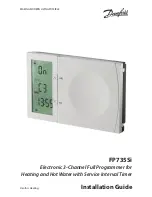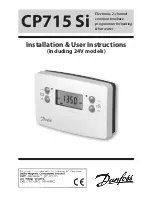
18
e.
Lift the actuator by means of adequate slings as per the weight of the actuator to render the perfect
horizontal (this is very important for easy coupling) utilizing the existing lifting point on the actuator.( refer
to pages no.
12-15
)
f.
Clean the adapter piece flange and remove anything that may prevent a perfect adherence to the valve.
g.
Lower the actuator onto the valve in such a way that the adapter, assembled on the valve stem, enters
the actuator drive sleeve. This coupling must take place without forcing and only with the weight of the
actuator.
Note:
Caution should be taken while connecting the adapter piece on to the valve stem.
h.
Check if the holes of the valve flange and adapter flange meets as well as any dowel pins (if provided).
If yes secure the actuator to the valve using correctly sized fasteners.
i.
Uniformly tighten the fasteners of the adapter flange.(refer to page no.
16
for tightening torque of
fasteners).
B.
Adjustment
Warning:
Note:
No special tools are required for these operations, but only some hexagonal wrenches of the required
sizes.
Important:
The actuator is shipped with a preliminary adjustment and not on the real valve stroke. If it is
necessary to change the adjustment, proceed as follows:
a)
Adjustment of mechanical stops for SRC or DA models :
(see figure 1)
After loosening relevant locking nut (item 2 for closing side or item 36 for opening side) rotate the
hexagonal screw (item 1 for closing side or item 35 for opening side) clockwise or counter-clockwise for
adjusting the angular stroke.
By rotating the Hexagonal screw clockwise, the angular stroke is reduced. Rotating counter-clockwise,
the angular stroke is increased.
For SRO models, the closing side adjusting screw will be on the cylinder or spring end while the opening
side adjusting screw will be on the rod cover
Note:
Paying attention to not remove completely the end stroke.
Note:
In case of Spring return actuators, before adjusting the mechanical stops, it is necessary to pressurize
the pneumatic cylinder with low pressure in order to reduce the pressure provided by the spring thrust against
the mechanical stop to be adjusted.
Summary of Contents for CAMERON LEDEEN VA Series
Page 4: ...3 NOTES ...
Page 14: ...13 LIFTING DEVICES MAXIMUM WORKLOAD Chains ...
Page 15: ...14 LIFTING DEVICES MAXIMUM WORKLOAD Slings ...
Page 16: ...15 ...
Page 17: ...16 ...
Page 27: ...26 Figure 1 VA0 MODEL HEAD FLANGE INTEGRATED WITH FRAME Figure 2 ...
















































